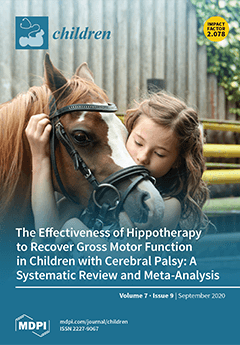Community parks provide opportunities for physical activity (PA) and facilitate social interactions. This formative evaluation assesses the implementation of ‘Open Goals’ (OG), a novel multi-sport programme aiming to increase family PA and community cohesion, delivered weekly by Liverpool Football Club’s charitable foundation to
[...] Read more.
Community parks provide opportunities for physical activity (PA) and facilitate social interactions. This formative evaluation assesses the implementation of ‘Open Goals’ (OG), a novel multi-sport programme aiming to increase family PA and community cohesion, delivered weekly by Liverpool Football Club’s charitable foundation to local parks in Liverpool, North West England. Three Open Goals parks were chosen for the evaluation settings. Formative evaluation measures included: System for Observing Play and Recreation in Communities (SOPARC) observations (
n = 10), direct session observations (
n = 8), semi-structured interviews with Open Goals coaching staff (
n = 3), and informal feedback from families (
n = 5) about their experiences of Open Goals. Descriptive statistics and thematic analysis were applied to quantitative and qualitative data, respectively. Within the three evaluation parks, Open Goals reached 107 participants from May–July 2019, through 423 session attendances. Fidelity of the programme was high (M = 69% of session content delivered as intended). Overall park use when OG was offered compared to when it was not offered was not statistically significant (
p = 0.051), however, target area use was significantly increased (
p = 0.001). Overall physical activity levels in parks were significantly (
p = 0.002) higher when Open Goals was being offered, compared to when it was not. Coaches reported that engagement in OG positively affected family co-participation and children’s behavioural development. Contextual issues included environmental and social barriers to programme engagement, including the co-participation element of the programme and criticism of the marketing of OG. It is evident that community-based multi-sport PA programmes endorsed by professional football clubs are well positioned to connect with local communities in deprived areas and to encourage PA and community engagement. This study suggests that such programmes may have the ability to improve park usage in specific areas, along with improving physical activity levels among families, although further research is required. Effective marketing strategies are needed for promotional purposes. Upskilling of coaches in the encouragement of family co-participation may support regular family engagement in PA in local parks.
Full article






